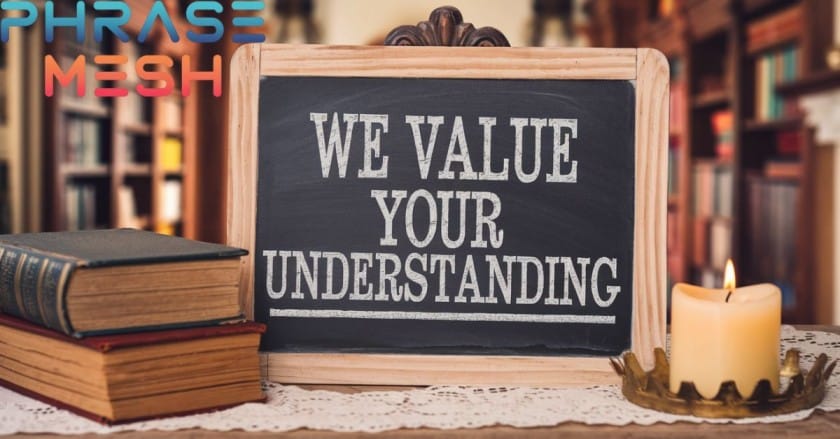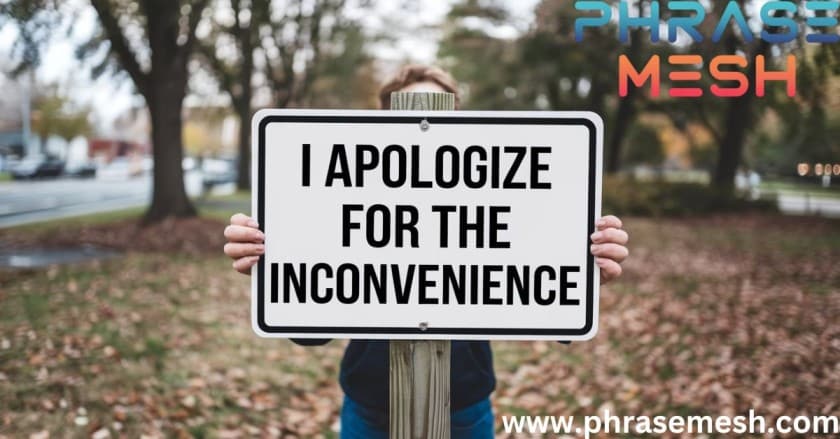In the professional communication landscape, the phrase “I apologize for the inconvenience” has become a corporate cliché that often falls flat.
Imagine a world where “I apologize for the inconvenience” transforms from a mundane, overused statement into a powerful connection tool. “I apologize for the inconvenience” can be more than just words—it’s an opportunity to rebuild trust, demonstrate empathy, and showcase genuine care.
Every time you say “I apologize for the inconvenience”, you’re not just addressing a problem; you’re crafting a moment of genuine human interaction that can turn potential frustration into lasting customer loyalty.
Is It Professional to Say “I Apologize for the Inconvenience”?
In professional communication, the phrase “I apologize for the inconvenience” is a standard response that can be perceived differently based on context and delivery. While universally recognized, it sometimes sounds generic and impersonal. In customer service, for example, a tech support representative responding to a system outage might use this phrase, but its effectiveness depends on the accompanying actions and genuine empathy demonstrated.
Pros:
- Universally understood communication
- Quick acknowledgment of the problem
- Formal and professional language
Cons:
- Can sound robotic and insincere
- Lacks specific emotional connection
- Might appear procedural rather than genuine
Example: When a flight gets delayed, an airline representative saying, “I apologize for the inconvenience” without offering compensation or explaining the reason can feel hollow and unsatisfactory to frustrated passengers.
20 Other Ways to Say “I Apologize for the Inconvenience”
- We Recognize the Disruption
- We Sincerely Regret the Inconvenience
- Please Accept Our Deepest Apologies
- We Understand the Impact
- We Appreciate Your Patience
- We’re Taking Immediate Action
- We Hear and Understand Your Concerns
- We Recognize This Isn’t Ideal
- Our Commitment Remains Strong
- We Value Your Understanding
- We Are Committed to Resolving This
- Your Experience Matters to Us
- We Want to Make This Right
- We Are Fully Accountable
- Your Feedback Is Invaluable
- We Strive for Better
- Transparency Is Our Priority
- We Are Actively Investigating
- Your Trust Means Everything
- Moving Forward Together
Pro tip:
Tailor your apology to the situation by acknowledging the specific issue and offering a clear plan to resolve it.
1. “We Recognize the Disruption”

Explanation: This approach demonstrates immediate problem acknowledgment, showing customers you understand their experience beyond a superficial level.
Scenario: A customer ordered a birthday gift that won’t arrive on time. The company recognizes the potential disappointment and proactively offers a solution. They upgrade the shipping to express delivery at no extra cost and acknowledge the timing issue directly.
The communication focuses on understanding the customer’s perspective and taking concrete steps to mitigate the inconvenience.
2. “We Sincerely Regret the Inconvenience”
Explanation: Combines genuine emotional sincerity with professional language, communicating authentic regret while maintaining business-appropriate communication.
Scenario: An internet service provider experiences network maintenance that disrupts customer connectivity. They communicate transparently about the expected duration of the service interruption and demonstrate commitment to resolving the issue quickly.
The message balances technical information with empathetic language, showing respect for the customer’s time and needs.
3. “Please Accept Our Deepest Apologies”
Explanation: A more formal expression indicating serious acknowledgment of an issue, suggesting the problem is taken seriously at an organizational level.
Scenario: A financial institution discovers a billing error that overcharged a customer. They take full responsibility, investigate thoroughly, and immediately plan to credit the customer’s account.
This approach emphasizes accountability and a commitment to resolving errors completely and promptly.
4. “We Understand the Impact”
Explanation: Focuses on empathy and validation, demonstrating emotional intelligence by explicitly recognizing the consequences of organizational actions.
Scenario: A professional conference gets unexpectedly postponed. The organizers acknowledge the significant disruption this causes to attendees’ professional plans and offer comprehensive compensation.
The communication shows deep understanding of the broader implications of their decision on participants’ schedules and opportunities.
5. “We Appreciate Your Patience”

Explanation: Positively reframes the interaction by acknowledging and appreciating the customer’s understanding during challenging circumstances.
Scenario: A restaurant experiences unexpected delays in seating due to overbooking. Instead of just apologizing, they offer tangible compensation and express gratitude for the customer’s forbearance.
This approach transforms a potentially negative experience into an opportunity to demonstrate customer care.
6. “We’re Taking Immediate Action”
Explanation: Shifts focus from apology to solution, reassuring the recipient that concrete, prompt steps are being taken to address the issue.
Scenario: A software platform encounters a critical functionality glitch. The technical team communicates their immediate response plan and commits to providing a detailed resolution report.
The message emphasizes proactive problem-solving and transparency.
7. “We Hear and Understand Your Concerns”
Explanation: Demonstrates active listening and commitment to addressing specific customer issues with genuine empathy and professional responsiveness.
Scenario: A product user reports functionality issues with a recent update. The support team acknowledges the specific concerns and commits to a thorough investigation.
This approach validates the customer’s experience and shows a genuine commitment to product improvement.
8. “We Recognize This Isn’t Ideal”
Explanation: A conversational, transparent approach that honestly acknowledges less-than-perfect situations while maintaining a professional tone.
Scenario: A travel booking requires unexpected modifications. The service provider offers compensation and demonstrates understanding of the inconvenience.
The communication style is honest, direct, and solution-oriented.
9. “Our Commitment Remains Strong”
Explanation: Reaffirms organizational dedication and reliability, communicating that a single issue will not compromise overall service quality.
Scenario: A utility service experiences an unexpected infrastructure disruption. They communicate their ongoing commitment to service excellence and outline preventative measures.
This approach maintains customer confidence during challenging circumstances.
10. “We Value Your Understanding”

Explanation: A gracious method of requesting patience, implying mutual respect and partnership between the organization and its customers.
Scenario: A bank undertakes a critical system upgrade that temporarily limits certain services. They process all transactions without additional fees and express appreciation for customer patience.
The communication reinforces a collaborative relationship between the organization and its customers.
11. “We Are Committed to Resolving This”
Explanation: Emphasizes solution-oriented communication that focuses on future action rather than dwelling on the problem.
Scenario: A software company addressing a significant user experience issue during a product update.
12. “Your Experience Matters to Us”
Explanation: Personalizes the communication by directly connecting the organization’s concern to the individual’s experience.
Scenario: A customer service team responding to a complex service complaint.
13. “We Want to Make This Right”
Explanation: Demonstrates proactive commitment to customer satisfaction and willingness to go beyond a standard apology.
Scenario: A retail company addressing a shipping or product quality concern.
14. “We Are Fully Accountable”
Explanation: Communicates transparency and organizational responsibility without making excuses.
Scenario: A financial institution addressing a billing or transaction error.
15. “Your Feedback Is Invaluable”

Explanation: Transforms a potentially negative interaction into an opportunity for improvement and collaboration.
Scenario: A product development team responding to user suggestions or criticisms.
16. “We Strive for Better”
Explanation: Positions the current issue within a broader context of continuous improvement and learning.
Scenario: A service provider addressing a systemic operational challenge.
17. “Transparency Is Our Priority”
Explanation: Builds trust by committing to open and honest communication throughout the resolution process.
Scenario: A telecommunications company explaining a service interruption.
18. “We Are Actively Investigating”
Explanation: Provides reassurance through a clear statement of immediate and ongoing action.
Scenario: A technical support team responding to a reported system malfunction.
19. “Your Trust Means Everything”
Explanation: Directly acknowledges the importance of the customer relationship beyond the immediate issue.
Scenario: A banking service addressing a security or account management concern.
20. “Moving Forward Together”

Explanation: Frames the interaction as a collaborative journey, emphasizing partnership and shared goals.
Scenario: A consulting firm addressing a project implementation challenge.
Would you like me to elaborate on any of these communication approaches?
final thoughts:
Professional communication is about more than just saying sorry. It’s an art of showing genuine care and commitment to resolving issues. The right words can transform a negative experience into an opportunity for building trust and strengthening relationships.
Effective apologies demonstrate empathy, accountability, and a forward-looking approach. By choosing thoughtful language, organizations can turn potential customer frustrations into moments of connection and understanding. The goal is always to make things right and show that the customer’s experience truly matters.
FAQs:
1. What does “I apologize for the inconvenience” mean?
It expresses regret for causing trouble or discomfort to someone, showing politeness and accountability.
2. When should I say, “I apologize for the inconvenience”?
Use it when your actions, mistakes, or delays disrupt someone else’s plans or expectations.
3. How can I make “I apologize for the inconvenience” sound more genuine?
Add specifics about the issue and express how you’ll resolve it, showing real concern.
4. Is “I apologize for the inconvenience” professional?
Yes, it’s a polite, professional way to acknowledge a problem and take responsibility.
5. What are alternatives to “I apologize for the inconvenience”?
Try “I’m sorry for the trouble” or “I regret the inconvenience caused” for a fresher tone.





